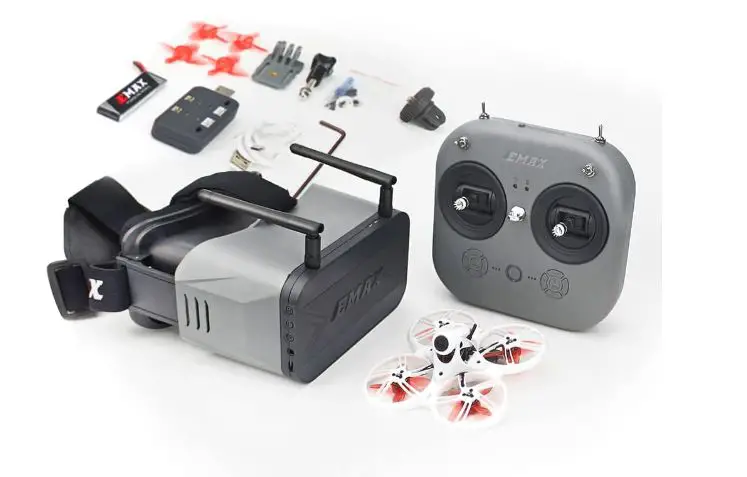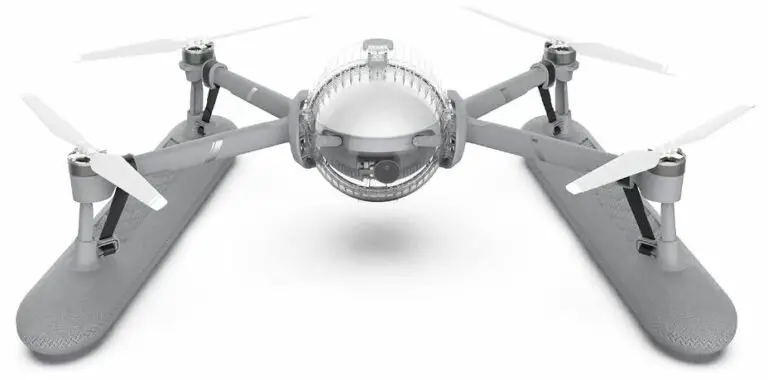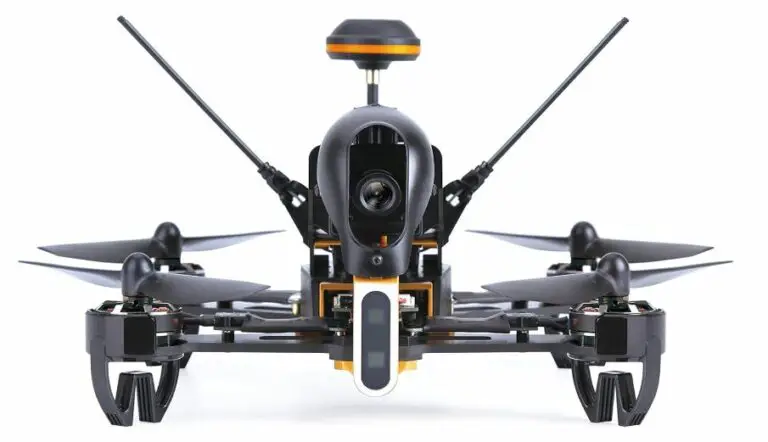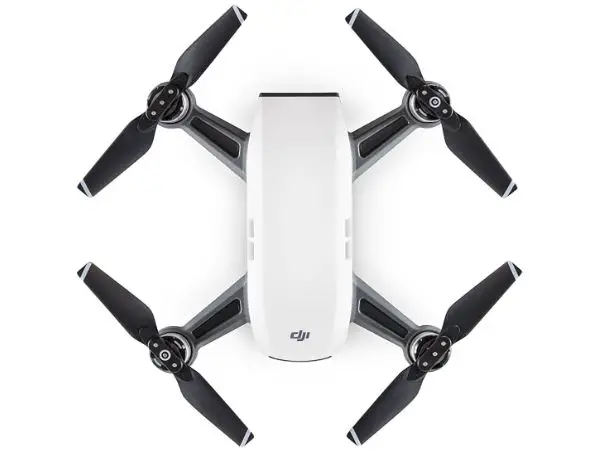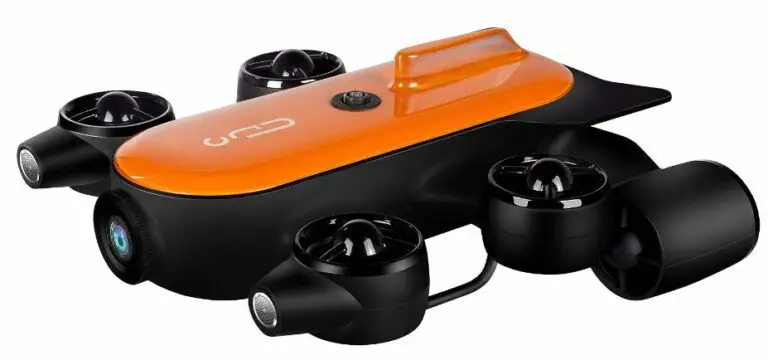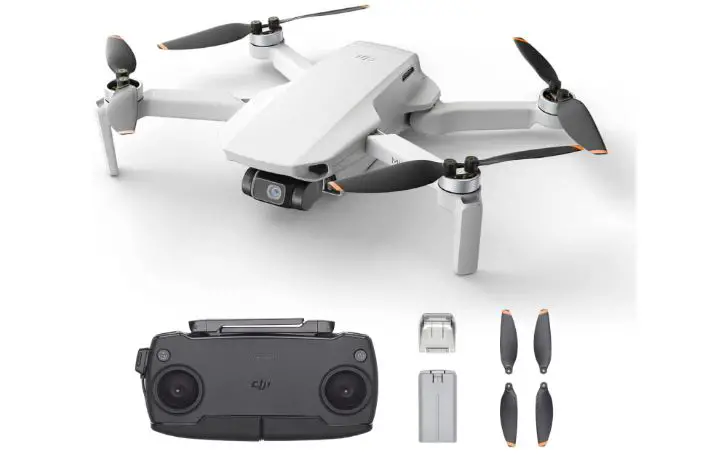What is a drone? Everything you Need to Know
Introduction
Drones, also known as unmanned aerial vehicles (UAVs), have rapidly emerged as versatile tools with numerous applications across various industries and sectors. These remotely piloted aircraft have revolutionized fields such as aerial photography, filmmaking, agriculture, surveying, search and rescue, and many others. Drones come in various sizes, from small consumer models used for recreational flying to large industrial-grade drones employed for commercial purposes.
In this comprehensive guide, we will explore the world of drones, delving into their technology, applications, regulations, and considerations for choosing the right drone for your needs. Whether you’re a hobbyist, professional, or business owner, understanding drones’ capabilities and potential can help you leverage this innovative technology for a wide range of tasks and objectives.
Through this guide, we aim to provide insights into the diverse uses of drones, their components, how they work, and the regulatory landscape governing their operation. Additionally, we will discuss maintenance and care tips to ensure the safe and efficient operation of drones, as well as future trends shaping the evolution of drone technology.
By the end of this guide, you will have a comprehensive understanding of drones, their applications, and how they can be utilized in various fields to enhance efficiency, productivity, and safety. Whether you’re interested in exploring aerial photography, conducting aerial inspections, or advancing research and innovation, drones offer boundless opportunities for exploration and innovation in the modern era.
Understanding Drones
Drones, also known as unmanned aerial vehicles (UAVs), are aircraft operated remotely by a human pilot or autonomously by onboard computers. These aerial vehicles come in various shapes, sizes, and configurations, ranging from small consumer drones used for recreational purposes to large industrial-grade drones employed for commercial applications.
Key aspects to understand about drones include:
- Components and Design:
- Drones consist of several key components, including a frame or chassis, motors, propellers, electronic speed controllers (ESCs), flight controllers, batteries, and various sensors and payloads. The design and configuration of a drone depend on its intended use and application, with different models optimized for specific tasks such as aerial photography, surveying, or surveillance.
- Flight Control Systems:
- Drones are equipped with flight control systems that govern their movement and operation. These systems typically include gyroscopes, accelerometers, barometers, and GPS receivers to measure and maintain the drone’s orientation, altitude, speed, and position during flight. Flight controllers process sensor data and adjust motor speeds to stabilize the drone and execute flight commands issued by the pilot or autonomous software.
- Remote Control and Autonomy:
- Drones can be controlled remotely by a human pilot using a handheld transmitter or smartphone app, or they can operate autonomously based on pre-programmed flight paths or real-time inputs from onboard sensors. Remote control allows pilots to manually maneuver the drone, adjust flight parameters, and operate onboard cameras and payloads, while autonomy enables drones to execute complex tasks and missions with minimal human intervention.
- Payloads and Sensors:
- Drones can carry a wide range of payloads and sensors, including cameras, sensors, LiDAR scanners, thermal imaging cameras, multispectral cameras, and other specialized equipment. These payloads enable drones to capture aerial imagery, collect data, perform inspections, and gather environmental information for various applications such as aerial photography, mapping, agriculture, construction, and surveillance.
- Communication and Connectivity:
- Drones communicate with ground control stations or remote pilots using wireless communication protocols such as radio frequency (RF), Wi-Fi, or cellular networks. This enables real-time telemetry data transmission, video streaming, and command inputs between the drone and the operator. Advanced drones may also feature encrypted communication and secure data transmission capabilities to protect sensitive information during flight operations.
- Safety and Regulations:
- Safety and regulatory considerations play a crucial role in drone operations to ensure safe and responsible flying practices. Pilots must adhere to aviation regulations, airspace restrictions, and local laws governing drone operation, including registration requirements, flight altitude limits, and prohibited areas. Compliance with safety guidelines and best practices helps mitigate risks and ensures safe integration of drones into the airspace.
Overall, understanding drones involves knowledge of their components, flight control systems, remote control and autonomy features, payloads and sensors, communication and connectivity capabilities, as well as safety and regulatory considerations. With advancements in technology and increasing adoption across various industries, drones continue to revolutionize aerial operations, offering innovative solutions for a wide range of applications and use cases.
Types of Drones
Drones come in various types, each designed for specific applications, environments, and operational requirements. Here are some common types of drones:
- Multirotor Drones:
- Multirotor drones, such as quadcopters, hexacopters, and octocopters, feature multiple rotors arranged in a symmetric configuration. They are highly maneuverable and stable, making them popular choices for aerial photography, videography, recreational flying, and indoor use. Multirotor drones are versatile and can be equipped with various payloads, including cameras, sensors, and accessories.
- Fixed-Wing Drones:
- Fixed-wing drones resemble traditional airplanes and feature a rigid wing structure that provides lift during flight. They are more efficient than multirotor drones in terms of endurance and range, making them suitable for long-distance aerial surveys, mapping, agriculture, and surveillance. Fixed-wing drones require a runway or catapult launch and typically operate in open outdoor environments.
- Single-Rotor Helicopters:
- Single-rotor helicopters, also known as rotorcraft or rotary-wing drones, feature a single large rotor mounted atop the aircraft and a smaller tail rotor for stability and control. They offer greater payload capacity and endurance compared to multirotor drones but require more complex flight control systems. Single-rotor helicopters are used for aerial filming, search and rescue, and military applications.
- Hybrid Drones:
- Hybrid drones combine features of both fixed-wing and multirotor aircraft, offering vertical takeoff and landing (VTOL) capabilities along with extended range and endurance. They can transition between vertical and horizontal flight modes, allowing for flexible operations in confined spaces and open environments. Hybrid drones are used for aerial mapping, surveillance, and delivery applications.
- Nano Drones:
- Nano drones are small, lightweight UAVs designed for reconnaissance, surveillance, and reconnaissance (RSR) missions. They are compact and agile, making them suitable for indoor flying, urban environments, and covert operations. Nano drones are used by military, law enforcement, and intelligence agencies for reconnaissance, search and rescue, and situational awareness.
- Fixed-Wing Vertical Takeoff and Landing (VTOL) Drones:
- Fixed-wing VTOL drones combine the efficiency of fixed-wing aircraft with the vertical takeoff and landing capabilities of multirotor drones. They can take off and land vertically like a helicopter and transition to horizontal flight like a fixed-wing aircraft, offering versatility for various applications, including mapping, surveillance, and cargo delivery.
- Unmanned Aerial Systems (UAS):
- Unmanned Aerial Systems (UAS) encompass a broad range of drones, including fixed-wing, multirotor, and hybrid aircraft, along with ground control stations, communication systems, and payloads. UAS are integrated systems designed for specific missions and applications, such as military reconnaissance, border surveillance, disaster response, and scientific research.
- Custom and DIY Drones:
- Custom and DIY drones are built by enthusiasts, hobbyists, and professionals using off-the-shelf components and open-source hardware and software. These drones can be customized and tailored to specific requirements, allowing users to experiment with different configurations, payloads, and features. Custom and DIY drones are popular among hobbyists, makers, and researchers for exploring new technologies and applications.
Each type of drone offers unique capabilities, features, and advantages depending on the intended use, environment, and operational requirements. Understanding the characteristics and applications of different types of drones is essential for selecting the most suitable option for your specific needs and objectives.
Components of a Drone
Drones consist of several essential components that work together to enable flight, navigation, and payload delivery. Understanding these components is crucial for operating, maintaining, and troubleshooting drones effectively. Here are the key components of a drone:
- Frame:
- The frame serves as the structural foundation of the drone, providing support and housing for all other components. Frames are typically made of lightweight materials such as carbon fiber, aluminum, or plastic and come in various shapes and sizes, including X-frame, H-frame, and quadcopter frame designs.
- Motors:
- Motors provide the mechanical power to drive the propellers and generate thrust for lift and propulsion. Drones are equipped with multiple brushless DC motors mounted on the frame, with each motor connected to a corresponding propeller. Motors are rated based on their size, KV (RPM per volt), and power output.
- Propellers:
- Propellers are rotating blades attached to the motors that generate lift and propulsion by creating airflow and generating thrust. Drones typically use two or more propellers arranged in symmetric configurations such as quadcopter (four propellers), hexacopter (six propellers), or octocopter (eight propellers) setups. Propellers come in various sizes, materials, and designs optimized for different flight characteristics and payload requirements.
- Electronic Speed Controllers (ESCs):
- Electronic Speed Controllers (ESCs) regulate the speed and rotation of the motors by converting electrical signals from the flight controller into precise motor commands. ESCs control the throttle, rotation direction, and braking of the motors, ensuring smooth and responsive flight control. Drones are equipped with one ESC for each motor, typically mounted on the frame near the motors.
- Flight Controller:
- The flight controller is the central brain of the drone, responsible for processing sensor data, executing flight commands, and stabilizing the aircraft during flight. Flight controllers contain microcontrollers, gyroscopes, accelerometers, barometers, and GPS receivers to measure and control the drone’s orientation, altitude, speed, and position. They run firmware algorithms that govern flight modes, autopilot functions, and navigation capabilities.
- Battery:
- The battery provides electrical power to the drone’s electronics, motors, and payloads during flight. Lithium polymer (LiPo) batteries are commonly used in drones due to their high energy density, lightweight, and rechargeable properties. Batteries are rated based on their voltage (V), capacity (mAh), discharge rate (C rating), and configuration (e.g., 3S, 4S, 6S). They are typically mounted on the drone’s frame and connected to the power distribution board or ESCs.
- Radio Transmitter and Receiver:
- The radio transmitter and receiver enable communication between the drone and the remote pilot or ground control station. The transmitter, also known as the remote controller, is held by the pilot and sends control signals to the drone via radio frequency (RF) transmission. The receiver, located onboard the drone, receives the control signals and relays them to the flight controller, allowing the pilot to maneuver the drone remotely.
- Onboard Sensors:
- Onboard sensors provide real-time data on the drone’s position, orientation, altitude, speed, and environmental conditions. Common sensors include gyroscopes, accelerometers, magnetometers, barometers, GPS receivers, and optical flow sensors. These sensors help the flight controller stabilize the drone, maintain its position, and navigate accurately during flight.
- Payloads and Accessories:
- Drones can carry various payloads and accessories, depending on the intended application and mission requirements. Common payloads include cameras, sensors, gimbals, LiDAR scanners, thermal imaging cameras, and cargo delivery systems. Accessories may include landing gear, propeller guards, LED lights, parachutes, and communication antennas.
Understanding the components of a drone is essential for assembling, configuring, and operating drones safely and efficiently. Each component plays a critical role in the drone’s performance, stability, and functionality, and proper maintenance and care are essential to ensure reliable operation and longevity.
How Drones Work
Drones, also known as unmanned aerial vehicles (UAVs), operate through a combination of aerodynamics, electronics, and communication systems. Understanding how drones work involves knowledge of their flight control systems, propulsion mechanisms, navigation capabilities, and onboard sensors. Here’s an overview of how drones work:
- Flight Control Systems:
- Drones are equipped with flight control systems that govern their movement and operation. The flight control system consists of a flight controller, sensors, and electronic speed controllers (ESCs). The flight controller processes sensor data from gyroscopes, accelerometers, barometers, GPS receivers, and other sensors to determine the drone’s orientation, altitude, speed, and position. Based on this information, the flight controller adjusts the motor speeds and control surfaces to stabilize the drone and execute flight commands.
- Propulsion and Lift:
- Drones generate lift and propulsion using rotating propellers driven by electric motors. The motors spin the propellers, creating airflow and generating thrust that lifts the drone off the ground and propels it through the air. Multirotor drones, such as quadcopters, hexacopters, and octocopters, use multiple rotors arranged in symmetric configurations to achieve stability and maneuverability. Fixed-wing drones rely on aerodynamic lift generated by the wings to maintain altitude and forward motion during flight.
- Remote Control and Autonomy:
- Drones can be controlled remotely by a human pilot using a handheld transmitter or smartphone app, or they can operate autonomously based on pre-programmed flight paths or real-time inputs from onboard sensors. Remote control allows pilots to manually maneuver the drone, adjust flight parameters, and operate onboard cameras and payloads. Autonomy enables drones to execute complex tasks and missions with minimal human intervention, such as waypoint navigation, automated flight patterns, and obstacle avoidance.
- Navigation and Positioning:
- Drones use GPS receivers and inertial measurement units (IMUs) to determine their position, velocity, and orientation relative to Earth’s surface. GPS provides global positioning data, while IMUs measure the drone’s acceleration, rotation, and gravitational forces. By combining GPS and IMU data, drones can navigate accurately, maintain stable flight, and follow predetermined flight paths. Advanced drones may also feature additional sensors such as optical flow sensors, ultrasonic sensors, and LiDAR scanners for precise positioning and obstacle detection.
- Communication and Telemetry:
- Drones communicate with ground control stations or remote pilots using wireless communication protocols such as radio frequency (RF), Wi-Fi, or cellular networks. This enables real-time telemetry data transmission, video streaming, and command inputs between the drone and the operator. Telemetry data includes information on the drone’s altitude, speed, battery status, GPS coordinates, and sensor readings, allowing the pilot to monitor and control the drone’s operation remotely.
- Payloads and Sensors:
- Drones can carry various payloads and sensors, including cameras, sensors, LiDAR scanners, thermal imaging cameras, multispectral cameras, and other specialized equipment. These payloads enable drones to capture aerial imagery, collect data, perform inspections, and gather environmental information for various applications such as aerial photography, mapping, agriculture, construction, and surveillance.
By combining these components and technologies, drones can perform a wide range of tasks and missions, from aerial photography and videography to mapping, surveying, surveillance, and delivery. Whether controlled remotely by a human operator or operating autonomously based on pre-programmed instructions, drones offer versatile solutions for various industries and applications. Understanding how drones work is essential for effectively utilizing their capabilities and harnessing their potential for innovation and exploration.
Applications and Use Cases
Drones, also known as unmanned aerial vehicles (UAVs), have a wide range of applications across various industries and sectors. Their versatility, maneuverability, and ability to access remote or hazardous environments make them valuable tools for numerous tasks and objectives. Here are some common applications and use cases of drones:
- Aerial Photography and Videography:
- Drones equipped with high-resolution cameras and gimbals are used for capturing aerial photos and videos for cinematography, advertising, real estate, tourism, and special events. They offer unique perspectives and angles that are difficult to achieve with traditional ground-based photography.
- Mapping and Surveying:
- Drones equipped with GPS receivers, cameras, and LiDAR sensors are used for aerial mapping, surveying, and 3D modeling of terrain, infrastructure, and landscapes. They provide accurate and detailed aerial imagery for urban planning, land surveying, construction site monitoring, and environmental assessment.
- Agriculture and Precision Farming:
- Drones equipped with multispectral cameras and sensors are used for precision agriculture applications such as crop monitoring, soil analysis, pest detection, and yield estimation. They provide farmers with valuable insights into crop health, nutrient levels, and irrigation needs, allowing for optimized crop management and increased yields.
- Search and Rescue Operations:
- Drones equipped with thermal imaging cameras and GPS tracking capabilities are used for search and rescue operations in remote or inaccessible areas. They can quickly deploy and conduct aerial reconnaissance to locate missing persons, stranded hikers, disaster survivors, and accident victims, helping emergency responders coordinate rescue efforts more effectively.
- Infrastructure Inspection:
- Drones equipped with cameras, LiDAR sensors, and inspection payloads are used for inspecting infrastructure assets such as bridges, dams, power lines, pipelines, and buildings. They provide close-range aerial inspection capabilities without the need for costly and time-consuming manual inspections, reducing risks to personnel and minimizing downtime.
- Environmental Monitoring and Conservation:
- Drones equipped with sensors and cameras are used for environmental monitoring, wildlife conservation, and habitat management. They can monitor ecosystems, track wildlife populations, detect environmental changes, and assess the impact of human activities on natural habitats, helping scientists and conservationists make informed decisions for biodiversity conservation and ecosystem preservation.
- Disaster Response and Emergency Management:
- Drones are used for disaster response and emergency management operations, including assessing damage, conducting search and rescue missions, and delivering supplies to disaster-affected areas. They provide real-time situational awareness, aerial reconnaissance, and logistical support to emergency responders, facilitating rapid response and recovery efforts during natural disasters, such as hurricanes, earthquakes, and wildfires.
- Infrastructure and Construction Monitoring:
- Drones are used for monitoring construction sites, infrastructure projects, and building inspections. They can capture aerial footage, track construction progress, measure stockpile volumes, and identify potential safety hazards, enabling project managers to monitor productivity, optimize workflows, and ensure compliance with project specifications and timelines.
- Law Enforcement and Public Safety:
- Drones are used by law enforcement agencies and public safety departments for surveillance, crime prevention, and traffic monitoring. They can patrol public spaces, monitor crowds at events, and assist in law enforcement operations, providing aerial support and enhancing situational awareness for police officers and first responders.
- Delivery and Logistics:
- Drones are being explored for delivery and logistics applications, including last-mile delivery of parcels, medical supplies, and emergency supplies in urban and rural areas. They offer fast and efficient delivery solutions, bypassing traffic congestion and reaching remote or inaccessible locations with ease.
These are just a few examples of the many applications and use cases of drones across various industries and sectors. As drone technology continues to advance and evolve, new opportunities and innovations are emerging, expanding the potential for drones to revolutionize how we work, live, and interact with the world around us.
Regulations and Legal Considerations
Operating drones safely and legally involves compliance with regulations and guidelines established by aviation authorities and regulatory agencies. These regulations are designed to ensure the safe integration of drones into airspace and protect public safety, privacy, and security. Here are some key regulations and legal considerations for drone operations:
- Registration and Licensing:
- Many countries require drone operators to register their drones with aviation authorities and obtain a license or permit before flying commercially or in certain airspace. Registration helps authorities track drone ownership and ensure accountability for safe and responsible flying practices.
- Airspace Regulations:
- Drones are subject to airspace regulations governing where and how they can fly. Aviation authorities establish airspace classifications, flight restrictions, and altitude limits to ensure the safety and efficiency of manned and unmanned aircraft operations. Operators must comply with airspace regulations to avoid conflicts with manned aircraft and other airspace users.
- Flight Restrictions:
- Certain areas, such as airports, military bases, national parks, and government facilities, are designated as no-fly zones or restricted airspace where drone operations are prohibited or restricted. Operators must respect flight restrictions and avoid flying in prohibited areas to prevent unauthorized access, airspace violations, and potential safety hazards.
- Visual Line of Sight (VLOS) Rule:
- Many jurisdictions require drone operators to maintain visual line of sight (VLOS) with their drones during flight, meaning they must be able to see the drone with unaided vision at all times. VLOS regulations help ensure safe operation and allow operators to maintain situational awareness and avoid collisions with obstacles or other aircraft.
- Remote Identification (Remote ID):
- Some countries have implemented remote identification (Remote ID) requirements for drones, mandating that drones broadcast identification information, such as registration numbers and operator contact details, to enable remote tracking and identification by authorities. Remote ID enhances airspace security, facilitates law enforcement, and promotes accountability for drone operators.
- Drone Operator Certification:
- Drone operators may be required to obtain certification or training to demonstrate their knowledge of aviation regulations, airspace procedures, and safe flying practices. Certification programs may include written exams, practical assessments, and recurrent training to ensure compliance with regulatory requirements and promote safe drone operations.
- Privacy and Data Protection:
- Drone operators must respect privacy rights and data protection laws when conducting aerial surveillance or capturing imagery of individuals, properties, or sensitive locations. They should obtain consent from property owners or individuals before flying over private property or collecting personal data using drones and comply with applicable privacy regulations.
- Insurance Coverage:
- Drone operators may be required to carry liability insurance coverage to protect against potential property damage, personal injury, or third-party claims resulting from drone operations. Insurance policies should provide coverage for drone-related risks and liabilities, including accidents, collisions, and property damage.
- Commercial Operations and Permissions:
- Commercial drone operations, such as aerial photography, surveying, and delivery services, may require specific permissions or approvals from aviation authorities or regulatory agencies. Operators must adhere to commercial regulations, obtain necessary permits or licenses, and comply with operational restrictions and safety guidelines for commercial drone activities.
- Safety Guidelines and Best Practices:
- Drone operators should follow safety guidelines and best practices recommended by aviation authorities, industry associations, and manufacturers to ensure safe and responsible flying practices. These guidelines may include pre-flight checks, maintenance procedures, emergency protocols, and operational guidelines for mitigating risks and ensuring safe drone operations.
By understanding and adhering to regulations and legal considerations for drone operations, operators can ensure compliance with applicable laws, protect public safety and privacy, and minimize risks associated with drone flying. It is essential to stay informed about evolving regulations and updates from aviation authorities to maintain compliance and operate drones safely and responsibly.
Choosing the Right Drone
Choosing the right drone involves considering various factors such as your specific needs, budget, skill level, intended use, and desired features. Here’s a step-by-step guide to help you choose the right drone:
- Define Your Purpose:
- Determine the primary purpose of buying a drone. Are you interested in aerial photography, videography, recreational flying, mapping, agriculture, or commercial applications? Clarifying your goals will help narrow down your options and prioritize essential features.
- Consider Your Skill Level:
- Assess your flying experience and skill level. If you’re a beginner, you may want to start with a user-friendly, easy-to-fly drone with basic features and stability modes. Advanced users may prefer more sophisticated drones with advanced flight modes, manual controls, and customization options.
- Set Your Budget:
- Establish a budget range based on your financial resources and investment priorities. Drones come in various price ranges, from budget-friendly entry-level models to high-end professional-grade drones. Consider the upfront cost of the drone, as well as ongoing expenses for accessories, batteries, and maintenance.
- Choose the Right Type of Drone:
- Select the type of drone that best suits your needs and preferences. Options include multirotor drones (e.g., quadcopters, hexacopters), fixed-wing drones, hybrid VTOL drones, and specialized drones for specific applications. Each type has its advantages, limitations, and suitability for different tasks.
- Evaluate Key Features:
- Identify key features and capabilities that are important to you. Consider factors such as camera quality, flight time, range, GPS capabilities, obstacle avoidance, follow-me mode, autonomous flight modes, payload capacity, and durability. Choose a drone with features that align with your intended use and desired functionality.
- Research and Compare Options:
- Research different drone models, brands, and specifications to compare their features, performance, and user reviews. Visit manufacturer websites, read product reviews, watch demonstration videos, and seek recommendations from experienced users or online communities. Pay attention to factors such as build quality, reliability, and customer support.
- Check Regulatory Compliance:
- Ensure that the drone you choose complies with applicable regulations and legal requirements for drone operation in your region. Check registration and licensing requirements, airspace regulations, and restrictions on commercial activities. Choose a drone that meets regulatory standards and can be operated safely and legally.
- Consider Expandability and Upgradability:
- Choose a drone that offers expandability and upgradability options, allowing you to customize and enhance its capabilities over time. Look for drones that support interchangeable components, modular designs, and compatibility with accessories, software updates, and aftermarket upgrades.
- Evaluate Brand Reputation and Support:
- Consider the reputation and track record of the drone manufacturer or brand. Choose a reputable and established brand known for producing high-quality drones, providing reliable customer support, and offering warranty coverage and aftersales service. Research the brand’s history, customer feedback, and reputation for product reliability and innovation.
- Test and Demo Before Buying:
- Whenever possible, test and demo the drone before making a purchase. Attend drone demonstrations, trade shows, or local events where you can try out different drone models and get hands-on experience with their features and performance. Testing the drone firsthand can help you make an informed decision and ensure compatibility with your preferences and requirements.
By following these steps and considerations, you can choose the right drone that meets your needs, preferences, and budget while ensuring safe and enjoyable flying experiences. Whether you’re a hobbyist, enthusiast, or professional user, selecting the right drone is essential for maximizing its capabilities and unlocking its full potential for various applications and use cases.
Maintenance and Care Tips
Proper maintenance and care are essential for ensuring the longevity, performance, and safety of your drone. Here are some maintenance and care tips to keep your drone in top condition:
- Read the User Manual:
- Familiarize yourself with the manufacturer’s recommendations and guidelines for operating, maintaining, and troubleshooting your drone. The user manual contains valuable information on assembly, calibration, flight modes, and maintenance procedures specific to your drone model.
- Pre-flight Checks:
- Conduct pre-flight checks before each flight to ensure that your drone is in proper working condition. Check the battery level, propellers, motors, and other components for signs of damage or wear. Verify that the firmware and flight control settings are up to date.
- Calibration:
- Calibrate your drone’s sensors, compass, and GPS system regularly to ensure accurate flight performance and stability. Follow the manufacturer’s instructions for calibrating the drone’s sensors and compass in a suitable location free from magnetic interference.
- Battery Care:
- Properly charge and store your drone batteries according to the manufacturer’s recommendations. Avoid overcharging or discharging the batteries excessively, as this can reduce their lifespan and performance. Store batteries in a cool, dry place at the recommended storage voltage.
- Propeller Maintenance:
- Inspect the propellers for damage, cracks, or deformities before each flight. Replace any damaged or worn propellers to ensure smooth and stable flight. Clean the propellers and motor shafts regularly to remove dirt, debris, and dust buildup.
- Motor Maintenance:
- Check the motors for signs of overheating, corrosion, or abnormal noise during operation. Keep the motor bearings lubricated with a small amount of silicone-based lubricant to prevent friction and wear. Replace any worn or damaged motors as needed.
- Camera and Gimbal Care:
- Clean the camera lens and gimbal mechanism regularly with a soft microfiber cloth to remove dirt, smudges, and fingerprints. Avoid touching the lens directly with your fingers to prevent scratches or damage. Use lens cleaning solution or compressed air for stubborn dirt or debris.
- Frame Inspection:
- Inspect the drone’s frame and structural components for signs of cracks, dents, or damage after each flight. Check for loose screws, bolts, or fasteners and tighten them as needed to ensure the integrity of the frame. Replace any damaged or worn parts to prevent structural failure.
- Storage and Transportation:
- Store your drone in a clean, dry, and dust-free environment when not in use. Use a protective case or bag to transport your drone safely and prevent damage during travel. Secure the propellers and remove the battery before storing or transporting the drone.
- Weather Conditions:
- Avoid flying your drone in adverse weather conditions such as strong winds, rain, snow, or fog, as these can affect flight stability and safety. Monitor weather forecasts and choose suitable flying conditions for optimal performance and safety.
- Software Updates:
- Keep your drone’s firmware and software up to date by regularly checking for updates from the manufacturer. Firmware updates may include bug fixes, performance improvements, and new features that enhance the functionality and stability of your drone.
- Flight Record Keeping:
- Keep a record of your drone’s flight history, including flight logs, maintenance tasks, and any incidents or accidents. This information can help you track the drone’s performance, identify potential issues, and troubleshoot problems more effectively.
By following these maintenance and care tips, you can prolong the lifespan of your drone, ensure safe and reliable operation, and enjoy many hours of flying fun and aerial photography. Regular maintenance and proper care are essential for maximizing the performance, longevity, and safety of your drone investment.
Future Trends in Drone Technology
As drone technology continues to evolve and mature, several trends are shaping the future of drones and their applications across various industries. Here are some key future trends in drone technology:
- Advanced Sensors and Payloads:
- Future drones will feature advanced sensors and payloads with enhanced capabilities for data collection, analysis, and processing. This includes high-resolution cameras, LiDAR sensors, multispectral cameras, thermal imaging cameras, gas sensors, and other specialized payloads for aerial mapping, inspection, monitoring, and surveillance applications.
- Autonomous and AI-Powered Drones:
- Autonomous and AI-powered drones will become increasingly prevalent, enabling intelligent and adaptive flight control, navigation, and decision-making capabilities. These drones will leverage artificial intelligence (AI), machine learning (ML), and computer vision algorithms to perform complex tasks autonomously, such as obstacle avoidance, path planning, object recognition, and automated inspections.
- Swarm Intelligence and Collaboration:
- Swarm intelligence techniques will enable drones to collaborate and communicate with each other to accomplish collective tasks and missions. Swarm drones can work together in coordinated formations to perform search and rescue operations, environmental monitoring, agricultural spraying, and other collaborative tasks more efficiently and effectively.
- Extended Flight Time and Range:
- Advances in battery technology, propulsion systems, and energy efficiency will lead to drones with extended flight time and range capabilities. Future drones will be able to fly longer distances, cover larger areas, and stay airborne for extended periods, enabling more extensive aerial surveys, inspections, and monitoring missions.
- Vertical Takeoff and Landing (VTOL) Drones:
- Vertical Takeoff and Landing (VTOL) drones will gain popularity for their ability to take off and land vertically like a helicopter and transition to horizontal flight like a fixed-wing aircraft. VTOL drones offer versatility and flexibility for various applications, including urban air mobility, cargo delivery, and aerial surveillance in confined spaces and urban environments.
- Urban Air Mobility (UAM):
- Urban air mobility (UAM) will emerge as a viable transportation solution for urban areas, with drones and electric vertical takeoff and landing (eVTOL) aircraft providing on-demand aerial transportation services for passengers and cargo. UAM networks will integrate drones into urban airspace, enabling faster, safer, and more efficient transportation options for commuters and businesses.
- 5G Connectivity and Communication:
- 5G connectivity and communication networks will enable drones to transmit data, video streams, and telemetry information in real-time with low latency and high bandwidth. 5G technology will support beyond visual line of sight (BVLOS) operations, remote piloting, and autonomous flight capabilities, unlocking new opportunities for drone applications in industries such as telecommunications, infrastructure, and public safety.
- Regulatory Frameworks and Integration:
- Regulatory frameworks and airspace management systems will evolve to accommodate the growing use of drones and ensure safe and efficient integration into the national airspace. Governments and aviation authorities will establish standards, regulations, and operational procedures for drone operations, including registration, licensing, flight permissions, and air traffic management systems.
- Environmental Sustainability:
- Environmental sustainability will be a key focus area for future drone development, with efforts to reduce carbon emissions, noise pollution, and ecological impact. Electric-powered drones, renewable energy sources, lightweight materials, and eco-friendly manufacturing processes will contribute to minimizing the environmental footprint of drone operations and promoting sustainable aviation practices.
- Emerging Applications and Industries:
- Drones will continue to find new applications and opportunities in emerging industries such as healthcare, logistics, construction, entertainment, and space exploration. From medical delivery drones and construction site monitoring to aerial shows and extraterrestrial exploration missions, drones will play a significant role in shaping the future of technology and innovation across diverse sectors.
These trends represent exciting opportunities for innovation and advancement in drone technology, paving the way for new applications, capabilities, and use cases that will transform industries, improve efficiency, and enhance quality of life in the years to come. As drone technology continues to evolve, it will unlock new possibilities for aerial exploration, observation, and interaction, revolutionizing how we perceive and interact with the world around us.
FAQs
What are the main types of drones?
- Consumer Drones: These are recreational drones used for photography, videography, and leisure flying.
- Commercial Drones: Used for various professional purposes, including agriculture, construction, surveying, and more.
- Military Drones: Used by armed forces for reconnaissance, surveillance, and combat missions.
- Racing Drones: Designed for high-speed racing competitions.
- Delivery Drones: Used by companies like Amazon for package delivery.
How do drones work?
Drones use electric motors or combustion engines to power propellers or rotors, generating lift to stay in the air. They rely on sensors, GPS, and gyroscopes to maintain stability and navigate. Remote controllers or onboard computers allow operators to control their movements.
What are the common uses of drones?
- Aerial photography and videography
- Surveying and mapping
- Agriculture, for crop monitoring and spraying
- Search and rescue operations
- Infrastructure inspection
- Environmental monitoring
- Wildlife conservation
- Law enforcement and surveillance
Are there any regulations for flying drones?
Yes, regulations vary by country, but common rules include registration, altitude restrictions, no-fly zones (e.g., near airports), and licensing for commercial use. It’s crucial to research and follow local drone laws.
What are the safety considerations when flying drones?
- Keep drones away from people, buildings, and aircraft.
- Maintain line-of-sight with the drone.
- Respect privacy and obtain necessary permissions.
- Follow manufacturer instructions and perform pre-flight checks.
- Be aware of weather conditions and battery life.
What are the advantages of using drones?
- Cost-effective for various applications.
- Reduced risk to human operators in dangerous tasks.
- Efficient data collection and surveillance.
- Quick deployment and accessibility to remote areas.
Are there any disadvantages of using drones?
- Limited battery life and flight time.
- Vulnerability to weather conditions.
- Privacy concerns.
- Potential for misuse and safety risks.
How has drone technology evolved?
Drone technology has advanced rapidly, with improvements in battery life, flight stability, and automation. High-resolution cameras, obstacle avoidance systems, and advanced software have also enhanced their capabilities.
Can I build my own drone?
Yes, both pros and amateurs frequently assemble unique drones from kits or parts. Understanding the rules and safety requirements is crucial, though.
Are there any emerging trends in drone technology?
Emerging trends include swarming drones for collaborative tasks, urban air mobility (passenger drones), and increased automation and AI integration for autonomous flight and decision-making.
Conclusion
Drones have evolved from military tools to versatile devices with widespread civilian and commercial applications. Their ability to capture aerial imagery, gather data, and perform tasks autonomously makes them invaluable in various industries. As technology continues to advance, we can expect even more innovative uses for drones, shaping the future of aviation and data collection.

